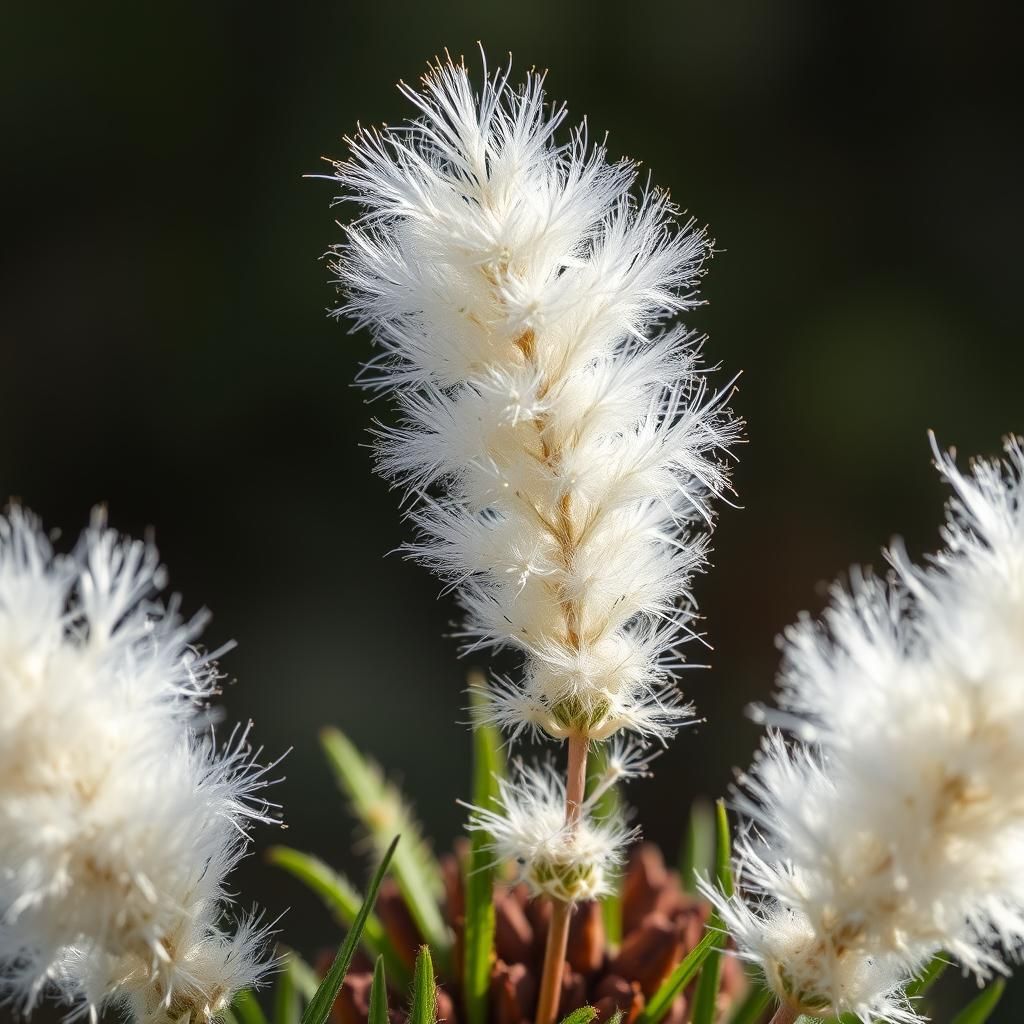Discovering Nature: What is the White Fluffy Plant? Facts, Uses, and Tips

Nature is full of surprises, and one of its most curious wonders is the white fluffy plant, often found in various ecosystems around the world. Known for its striking appearance and soft, cloud-like clusters, this plant has fascinated botanists, gardeners, and nature enthusiasts alike. In this article, we will delve into the characteristics of the white fluffy plant, exploring its unique features, potential uses, and essential care tips. Whether you're looking to incorporate it into your garden or simply wish to understand more about this enchanting species, join us on a journey of discovery that celebrates the beauty and versatility of nature.
Understanding the White Fluffy Plant
The white fluffy plant, commonly known as Cotton (Gossypium), is a flowering plant that produces soft, fibrous bolls containing cotton fibers. These fibers are harvested and processed to create textiles and various products, including clothing and home furnishings. Cotton is an essential agricultural commodity, especially in warm climates, where its growth is prominent. The plant can grow up to two meters tall, featuring broad green leaves, and once mature, the bolls burst open to reveal the characteristic fluffy white fibers, which are highly valued for their softness and durability.
Botanical Description
The botanical characteristics of the white fluffy plant include its large yellow flowers that eventually develop into green bolls. As the bolls mature, they turn brown before splitting open, revealing the white cotton fibers. The plant typically has a bushy growth habit and can reach a height of about six feet. It requires a warm climate and well-drained soil to thrive, showcasing a unique life cycle that begins with seeding and extends through flowering and boll formation.
Uses of Cotton Fibers
The white fluffy fibers are primarily used in the textile industry to produce various fabrics, including denim, muslin, and t-shirts. Cotton's softness, breathability, and absorbency make it an ideal choice for clothing items that are worn next to the skin. Besides textiles, cotton fibers are also utilized in producing paper, biodegradable plastics, and even food products, such as cottonseed oil, which is extracted from the seeds left after fiber processing.
Cultivation and Harvesting
Cotton cultivation occurs in regions with warm temperatures and ample sunlight. Farmers typically plant cotton seeds in late spring, allowing the plants to grow throughout the summer months. Once the bolls are mature and burst open in the fall, they are harvested mechanically or by hand. The harvesting process is critical as it affects the quality of the fibers; therefore, careful attention is given to ensure the cotton is picked at the optimal time.
See also:
Environmental Impact
The production of the white fluffy plant has significant environmental implications, particularly concerning water usage, pesticides, and soil health. Cotton is known to be a thirsty crop, requiring substantial irrigation in many regions. Furthermore, the heavy use of chemical pesticides to combat pests can lead to environmental harm and affect local biodiversity. Organic cotton farming practices have emerged as a response to these issues, focusing on sustainable methods that minimize negative impacts on the environment.
Cultural Significance
The white fluffy plant not only plays a crucial role in the economy but also holds cultural significance in various regions. In the United States, cotton is often referred to as white gold due to its historical economic impact, particularly in the southern states. Additionally, cotton has been an integral part of the textile traditions in countries like India, where it has been used for centuries to create beautiful fabrics and handicrafts, reflecting the cultural heritage of the communities involved.
| Aspect | Details |
|---|---|
| Plant Height | Up to 2 meters |
| Flower Color | Yellow |
| Harvest Season | Fall |
| Uses | Textiles, Paper, Oil |
| Environmental Concern | Water use, Pesticides |
Understanding the Characteristics and Habitat of the White Fluffy Plant
The White Fluffy Plant, often identified by its cotton-like appearance, primarily thrives in moist, warm climates. This plant is typically found in grasslands, meadows, and along riverbanks, where it can benefit from ample sunlight and rich soil. Its remarkable fluff serves not only to attract pollinators but also to protect seeds as they disperse. With its unique aesthetic appeal, this plant has captured the attention of botanists and nature enthusiasts alike, prompting a deeper exploration into its ecosystem role and interactions with various species.
Identifying the White Fluffy Plant
Identifying the White Fluffy Plant involves recognizing its distinctive features, including long, silky fibers and broad green leaves. The plant typically reaches a height of 1 to 3 feet and can be characterized by cluster-like blooms that look like white puffs. Understanding these traits is crucial for differentiating it from similar species within its habitat, allowing enthusiasts to appreciate its unique beauty in nature.
Common Uses of the White Fluffy Plant
The White Fluffy Plant continues to fascinate researchers and enthusiasts due to its diverse uses. Historically, its fibers have been harvested for textile production, utilized in making soft and durable fabrics. Additionally, the plant has applications in medicinal remedies, where extracts are believed to possess properties beneficial for treating various ailments. Furthermore, it plays a role in the landscape industry, offering an eye-catching element for gardens and parks.
See also:
Ecological Importance of the White Fluffy Plant
From an ecological standpoint, the White Fluffy Plant contributes significantly to its environment. It provides habitat and sustenance for numerous pollinators, including bees and butterflies, which are vital for ecological balance. The plant's seeds, dispersed by the wind, support biodiversity as they colonize new areas. Furthermore, its presence can improve soil health, preventing erosion and promoting a healthier ecosystem.
Growing Tips for the White Fluffy Plant
For those looking to cultivate the White Fluffy Plant, several key tips can enhance growth success. Planting in well-draining soil with moderate moisture is essential, as this species thrives in conditions that neither oversaturate nor dry out the roots. Additionally, ensuring adequate sunlight exposure is crucial; this plant flourishes best in full sun environments. Regular pruning can promote healthy branching and flower production, resulting in a more vibrant display.
Potential Challenges in Caring for the White Fluffy Plant
Despite its many benefits, caring for the White Fluffy Plant presents certain challenges. It can be susceptible to particular pests and diseases, which can compromise its health. Maintaining vigilance for signs of infestation or fungal infections is vital. Moreover, ensuring the right balance of water is critical, as overwatering can lead to root rot while underwatering can weaken the plant, making it more prone to stress. Regular monitoring and appropriate care strategies can mitigate these issues effectively.
Questions from Our Readers
What is the white fluffy plant commonly known as?
The white fluffy plant is often referred to as cotton. It is the fiber harvested from the cotton plant, which is primarily grown in warm climates. Cotton is widely used in the textile industry to make various fabrics and clothing due to its soft and breathable nature.
Is the white fluffy plant used in any other industries?
Yes, besides the textile industry, the white fluffy plant, or cotton, is also used in the production of cottonseed oil, which is a popular cooking oil. Additionally, byproducts of cotton are used in making paper, mattresses, and even in the production of biodegradable plastics.
See also:
How is the white fluffy plant harvested?
The cotton plant is harvested by either mechanical or manual methods. In most modern agriculture, mechanical harvesters are used to efficiently collect the fluffy cotton bolls from the plants, which open up to reveal the white fibers clustered inside.
Are there different varieties of the white fluffy plant?
Yes, there are several different varieties of the cotton plant, including Upland cotton, Pima cotton, and Egyptian cotton. Each variety differs in qualities such as fiber length, strength, and texture, making them suitable for different uses in the textile industry.

If you want to read more articles like Discovering Nature: What is the White Fluffy Plant? Facts, Uses, and Tips, we recommend you check out our Landscaping category.
Leave a Reply
Related Articles